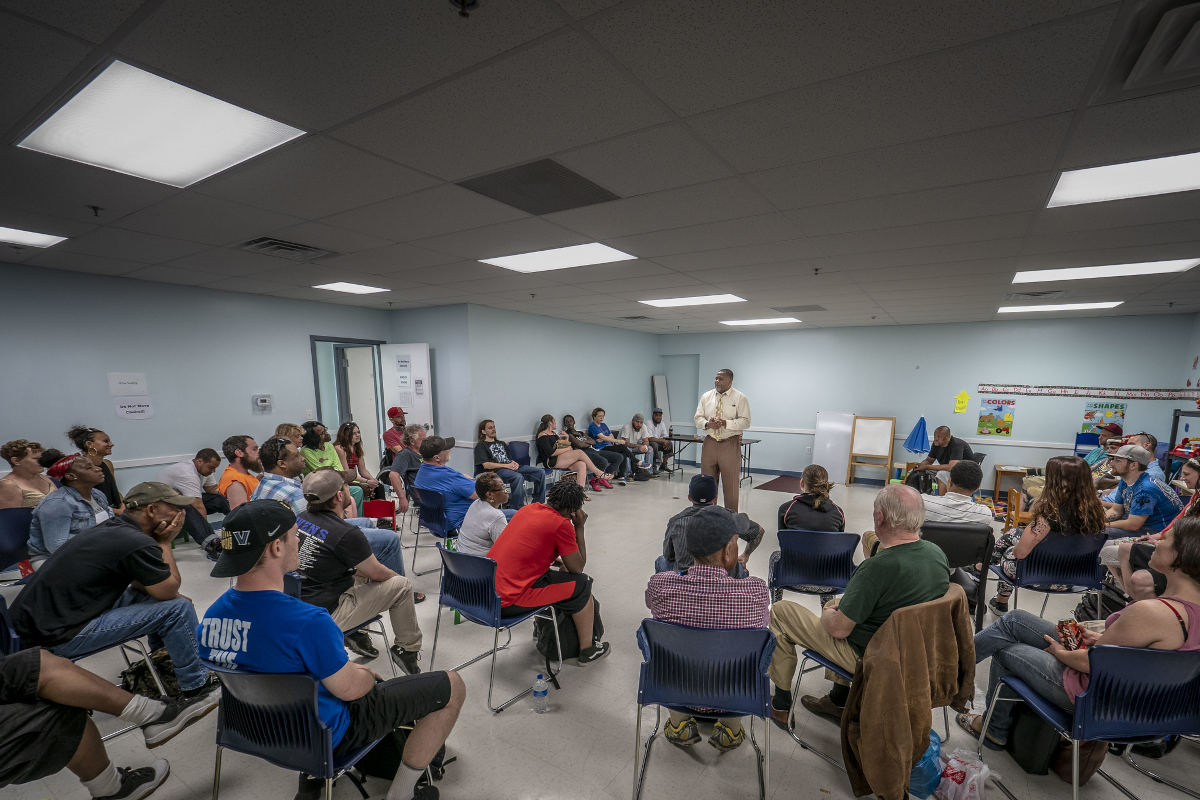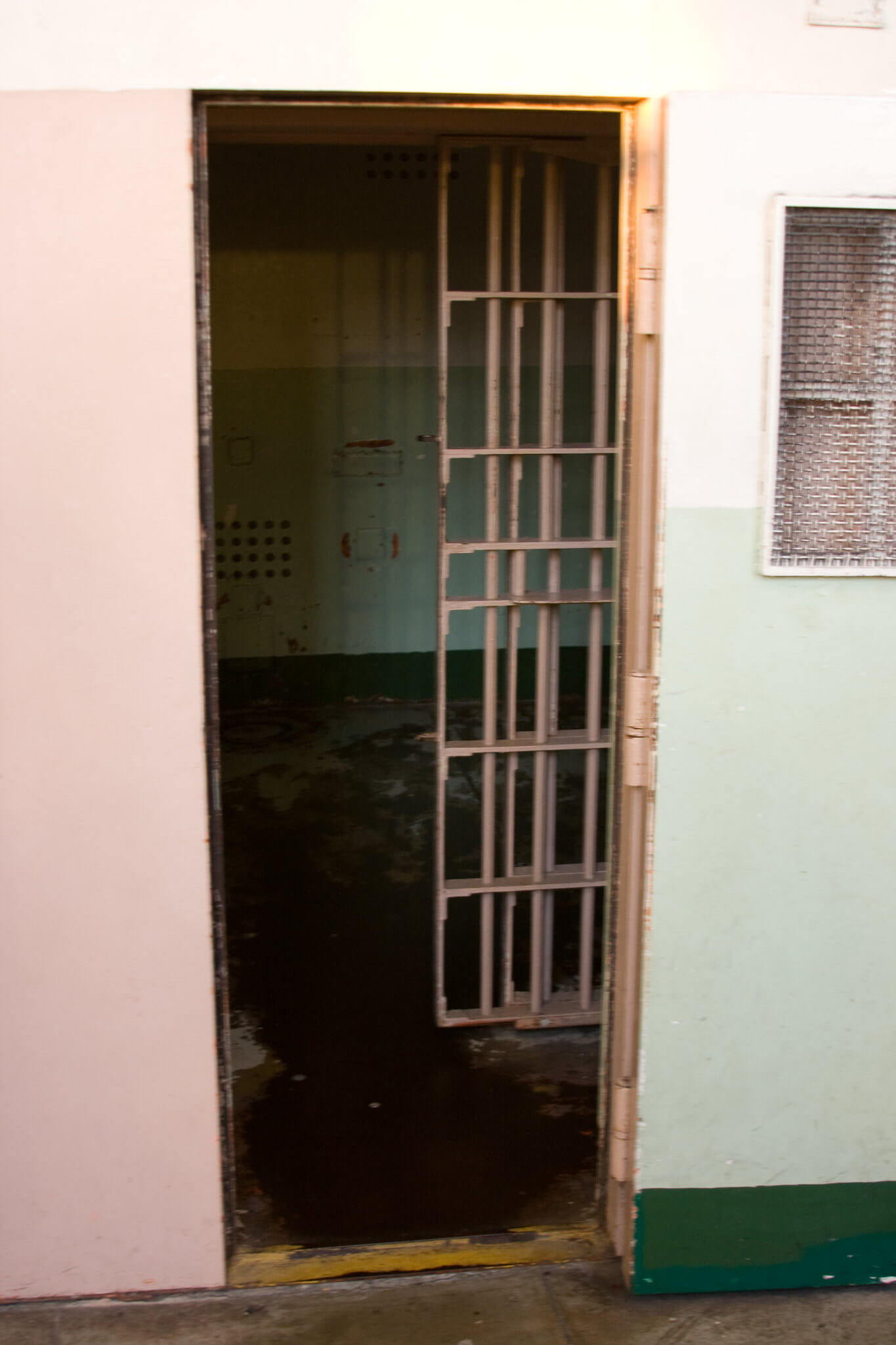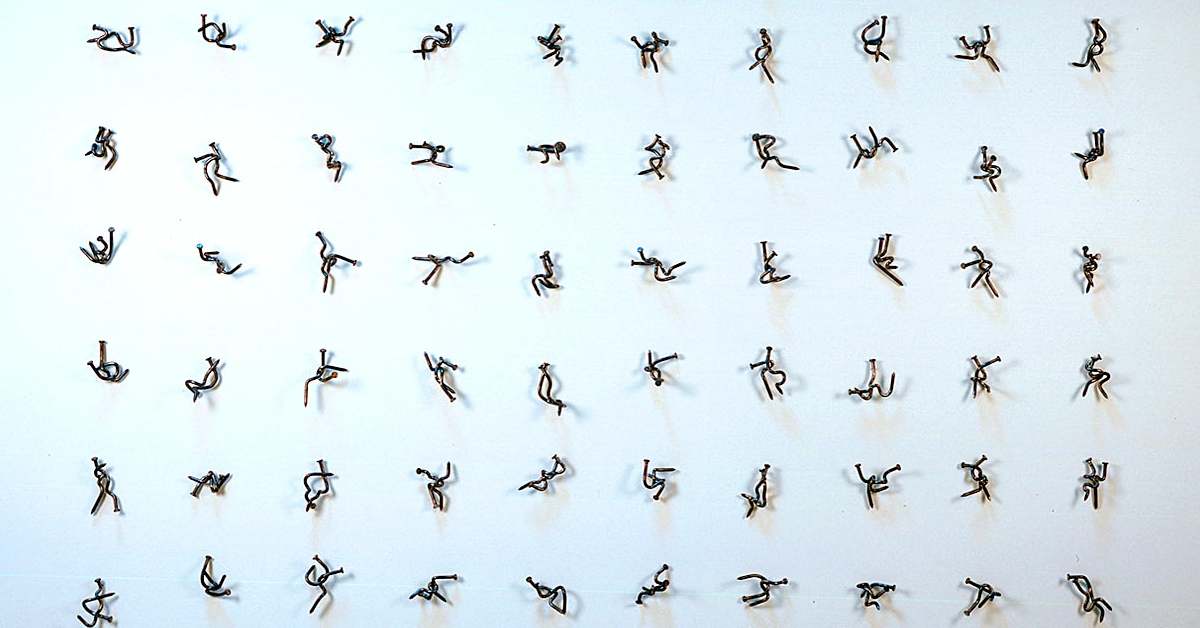What if jails were able to reduce recidivism by 50% over a three-year period (based on rearrest)?
Well, 50 years ago, that’s exactly what we did.
How did that happen? We developed a comprehensive and integrated program aimed at multiple stakeholders, and implemented it systematically through five phases: readiness, awareness, acquisition, application, and follow-up. This post will address all five phases of the Corrections component of the Justice in PEACE system I overviewed in the last post.

How do you get inmates and correction officers “ready” to make the most of a correctional experience?
First, you listen to both parties feelings, expectations, and previous experiences. Second, you invite them to co-create possibilities for more productive experiences for all concerned. In my experience, most interventions do not allocate sufficient time and resources to getting people ready to make a change in their lives. Readiness occurs when stakeholders are asked for their input prior to any implementation. Increased focus on preparing stakeholders for making changes in their life choices seems to me to be the best place to start the correctional process.
In the 1970’s, In the Kalamazoo County Jail, we provided all stakeholders with a new kind of incarceration experience. In the years before we were involved, the Kalamazoo County Jail was not unlike most jail programs in the country. Poorly trained correctional officers rudely ushered new inmates to their cells and slammed the doors. The inmates were often hostile, angry and broken. The guards were guarded, uneasy, and nervous.
The situation was tense because no one knew what to expect or how their lives would be on either side of the bars.
After spending hundreds of thousands of dollars cleaning up the inmate-caused destruction in a newly constructed jail, county commissioners decided it was time to try another approach. They were able to secure a grant from the Law Enforcement Assistance Agency (LEAA) to fund the program. After an executive director came on board, who had been recruited from the Rhode Island Training School for Boys, he hired 10 additional staff: 3 classroom teachers, 2 physical education instructors, 2 psychologists, and 3 support staff.
The staff went through extensive training in order to prepare them not only to work within the confines of a jail, but also to deal constructively with inmates who had a whole range of mental health, educational, and drug abuse issues.
We readied all stakeholders for the changes we were proposing. We let the correction officers know we heard their ideas and concerns and that our goal was to make their lives easier and safer. As new inmates were processed into jail, they were informed about the rehabilitation program and what their responsibilities would be if they chose to join. We told them their behavior in the jail would determine whether or not they were selected and allowed to remain in the program. We reached out to judges and parole officers to look for points of interdependence.
We made the correctional officers aware of what the program would entail and asked them for their suggestions for creating a safe and productive environment. We emphasized that the core of this program was training as treatment – there would be no pampering or molly-coddling. Inmates would be expected to adhere to stringent standards for conduct. If they were unable to meet the standards, they would not be allowed to participate in the program. We explained that the training consisted of physical fitness, educational improvement, and emotional development. We reviewed with them the token economy system we had created that enabled instructors to rate participation and progress of inmates in each of the classes.
We made the inmates aware of the program by visiting them outside their cells. We explained that we would be offering a variety of programs and, if they wanted to join, they would get access to a gym, classrooms, books, the TV room, and counselors. In return they would be expected to comply with the rules of the program. We showed them the cards they would be receiving that would enable instructors to rate their performance and how they could earn points for TV or phone calls.
By taking steps to make all stakeholder ready for change and aware of the programs that would be offered, we increased buy-in as well as the possibilities for change. We found that implementing a correctional program before stakeholders are fully ready and aware leads to less than optimal results.
Just as any correctional program needs to increase readiness and awareness before implementation, no amount of support will succeed if people don’t have the skills they need to survive and thrive. Acquiring the skills to become a responsible citizen is an essential task for anyone who ends up in jail. Acquiring the skills to become a responsible correctional officer is an essential task for anyone who works in a jail.
So what skills do both of these stakeholders need to acquire?
Physically, inmates need to develop a level of fitness that enable them to generate sufficient energy to meet each day’s challenges.
They need to develop endurance, build strength, and become more flexible. These physical skills spill over into their emotional and intellectual lives as well. These skills can be taught in structured classes in the cell, gym, or yard.
Emotionally, inmates need to develop the interpersonal skills required to deal with correctional officers, police, judges, family members, employers and fellow employees.
It’s the interpersonal breakdowns and outbursts that created so many of the problems that ended in a jail cell. There are several interpersonal skills that inmates can learn efficiently: attending, listening, observing, responding, and initiating. These skills are critical for staying out of trouble and for successful re-entry into society.
Intellectually, inmates need to learn the essentials for operating in society: reading, writing, and basic math.
They also need to attain a basic level of education such as a GED. Giving access to books and courses not only enables inmates to make better use of their time while incarcerated, it also prepares them to succeed when they return to the streets. It is possible to teach inmates how to improve the way they think, analyze, synthesize, and represent.
Spiritually, inmates need to learn how to stay calm in a crisis.
Basic meditation skills can help them avoid reactions that could lead them to trouble. Research shows that most people are either reactive or addictive. In today’s fast-changing society, people need to make creative adaptations to accelerating demands. Creativity occurs most frequently in a calm state. Helping inmates stay calm and clear can make a huge difference.
All of these skills can be taught, but inmates don’t acquire them through facts and concepts.
They learn how to do these behaviors by being trained in specific steps.
For example, there is a big difference between telling someone they need to pay attention and teaching them to face another person, maintain eye contact, lean forward in a non-threatening way, and eliminate distracting behaviors.
Telling someone they need to listen up is different than teaching them how to recall content, reflect on meaning, pick-up on key words, hear tone, pace and volume, and paraphrase what they heard.
Correctional officers can also benefit from all these skills.
They just have different applications. For example, a correctional officers needs to know now to listen carefully to the chatter taking place in the jail, defuse tension, and present themselves in a way that does not provoke dangerous reactions.
In the Kalamazoo County Jail, we trained inmates and corrections officers in all of these skills resulting in a 50% reduction of recidivism.
In retrospect, we could have improved upon that rate by focusing more on application and follow-up.
As inmates prepare to leave jail and return to society, it’s imperative to make that transition smooth by teaching them how to apply the skills they have acquired in order to deal more effectively with future encounters with law enforcement officers, family members, potential employers, and future co-workers. The justice system also needs to follow-up how the inmate is doing back on the streets and to make sure that the person has the support he or she needs to succeed.
Assuming that inmates acquired the skills required to function effectively in society, they still need to apply those skills to situations they will need to navigate when they return to the environments that contributed to their illegal behavior in the first place. They need to know how to conduct themselves during job interviews, difficult conversations with friends and family, in a classroom, or in encounters with representatives of the justice system. These applications can be practiced in simulated situations while they are still in jail.
Follow-up, however, may be the most important ingredient of all.
What we mean by follow-up focuses less on control and monitoring and more on helping ex-inmates find the support they need to reintegrate successfully.
Follow-up could include connecting a person with a mental health agency, a drug treatment center, a potential employer, or an educational institution. It might involve helping someone find housing or transportation assistance. The key is to link up people with the community agencies that can help them succeed.
The idea is to create a comprehensive, integrated, and systematic correctional system that results in people becoming fully functioning and contributing members of society.

It begins with getting them ready for a correctional experience vs. a criminal experience.
It then makes them aware of options and possibilities available to them. The experience continues with the acquisition of living, learning and working skills required to be a productive citizen. Finally, inmates learn how to apply the skills they learned, and they receive whatever support is necessary to help them transition successfully.
On a parallel path, correctional officers need to learn how to apply their skills to the real-time, make-or-break situations they encounter on the job.
They may also require assistance in linking up with community agencies that can help them cope with a very stressful career and to avoid bringing the challenges of their jobs back to their families. Officers need support too.
In this post I have outlined the critical steps required to enhance one key component of the justice system. The correctional component is just one part of an inter-related fabric that needs to be woven together in PEACE. I am hoping someone else will inquire more deeply into the possibilities for Prevention, Enforcement, Alignment, and Engagement. May it be so.
Also published on Medium.




This is fabulous Ricky! Thank you